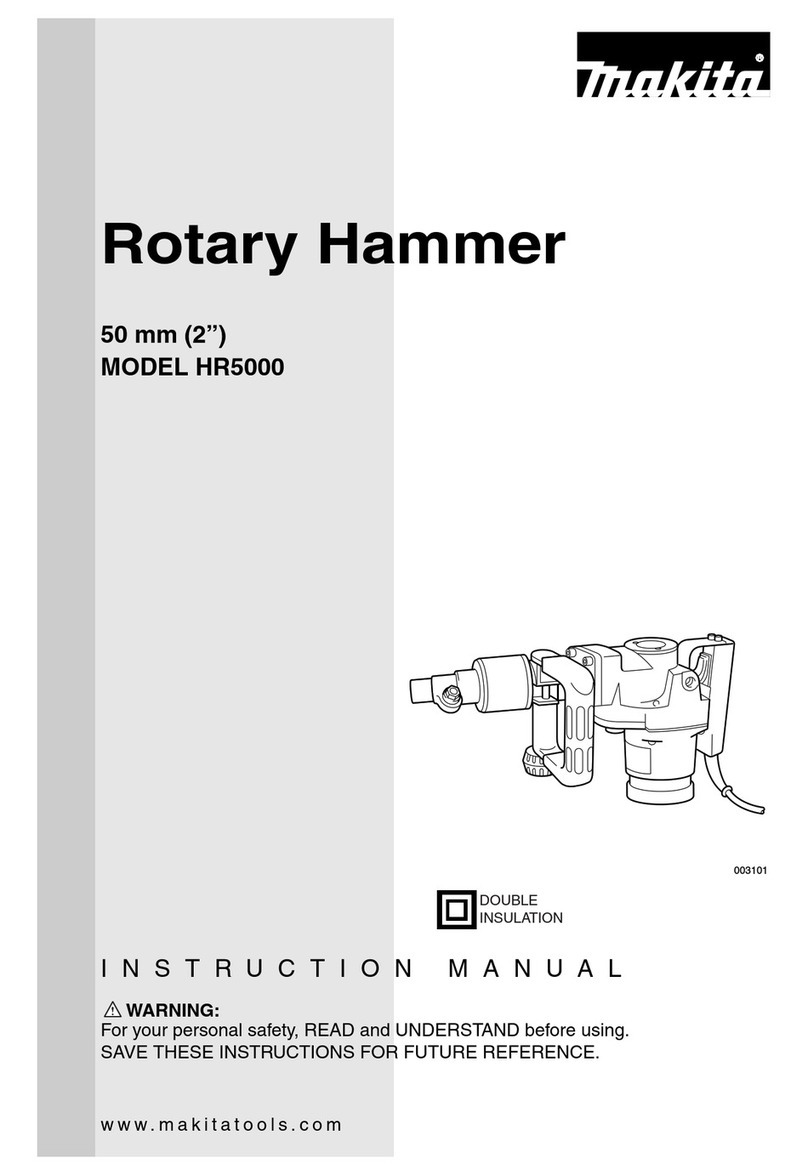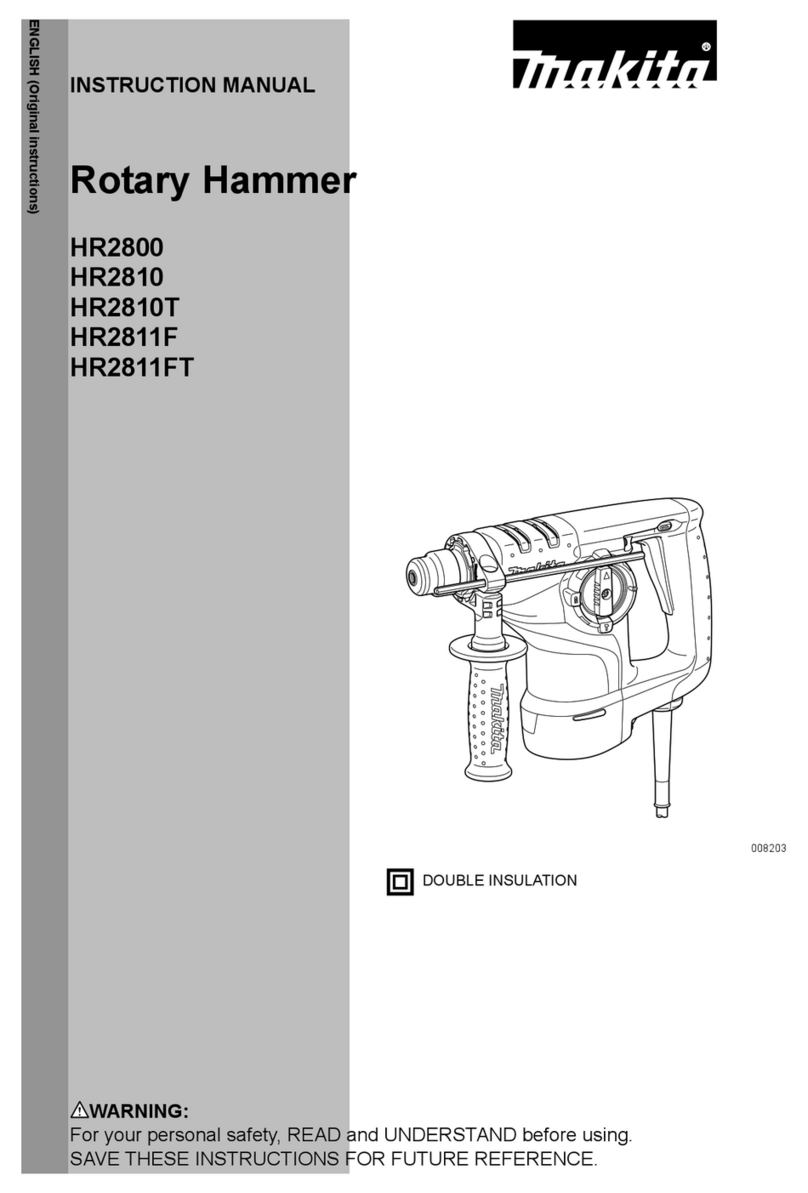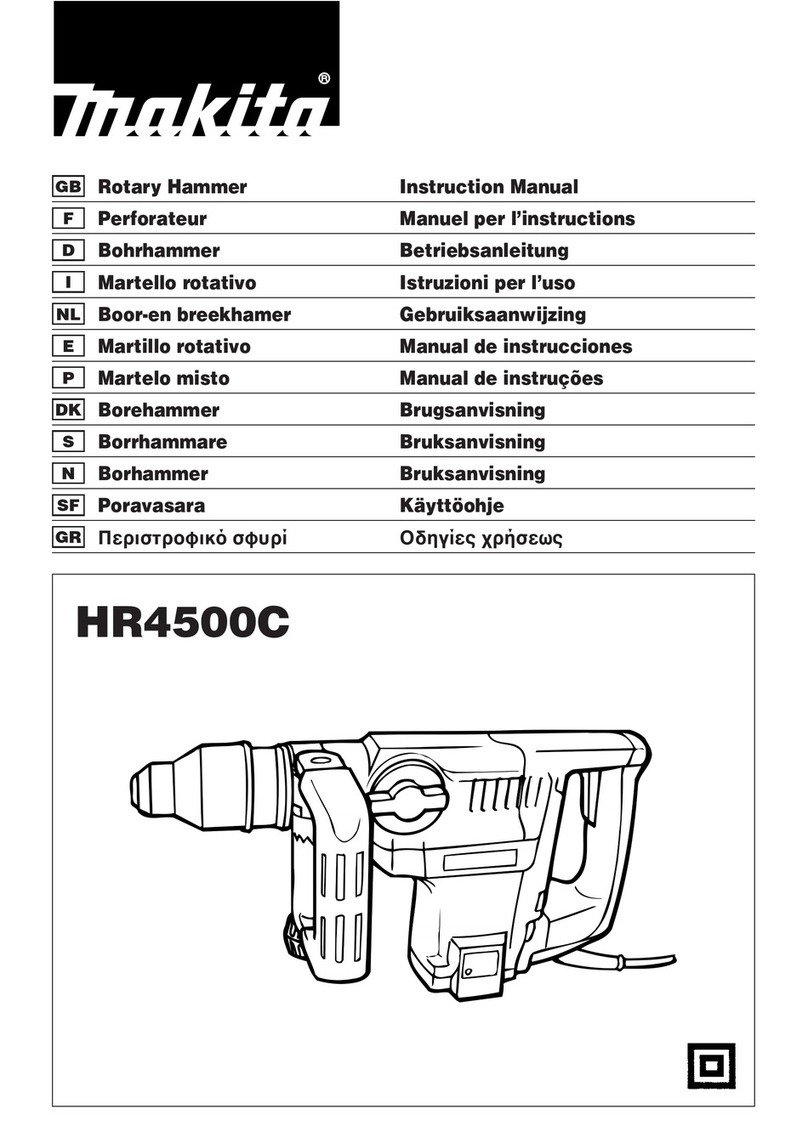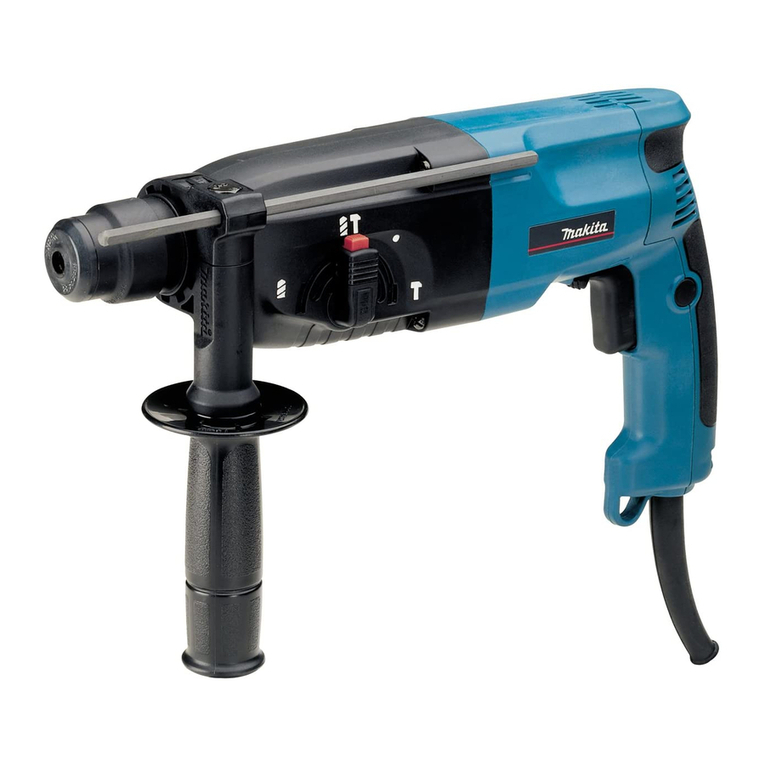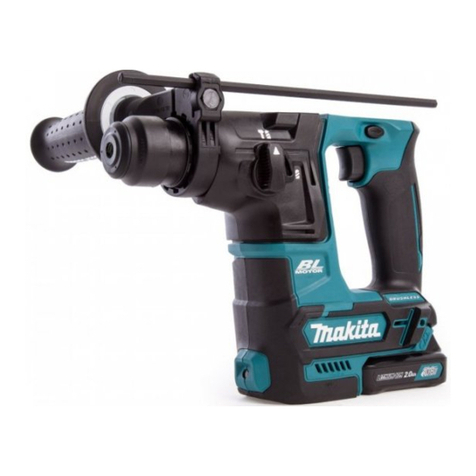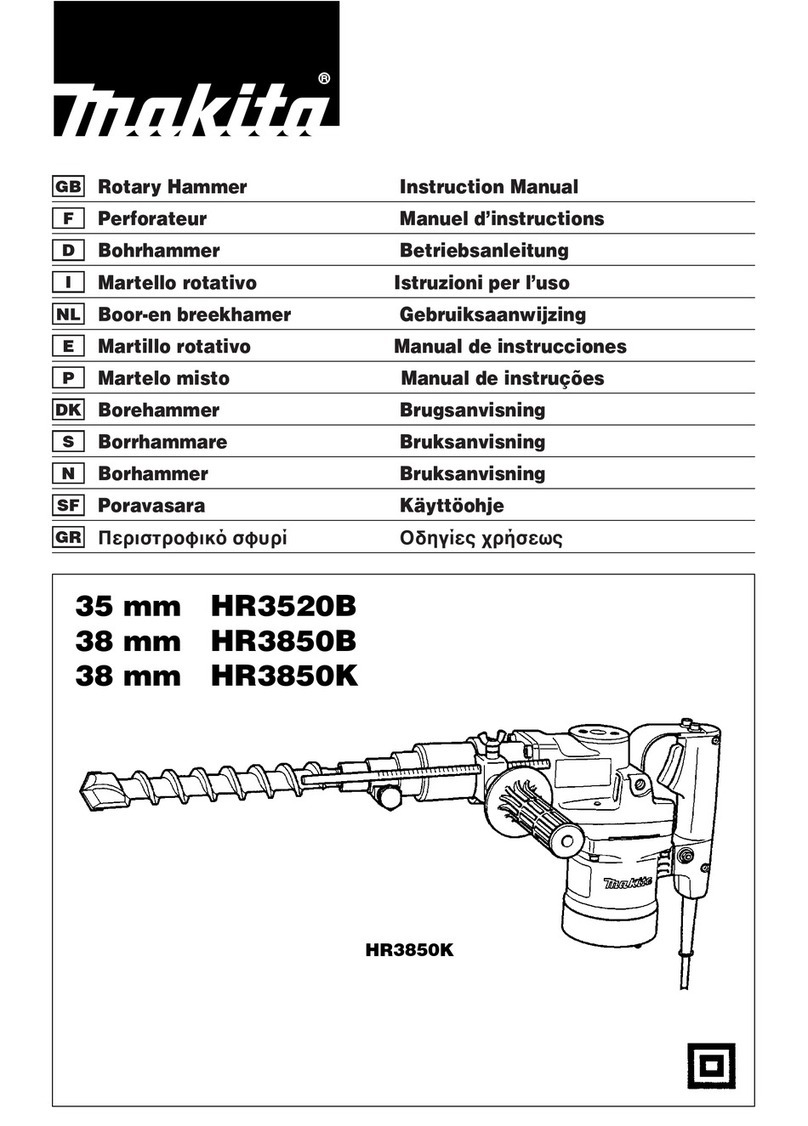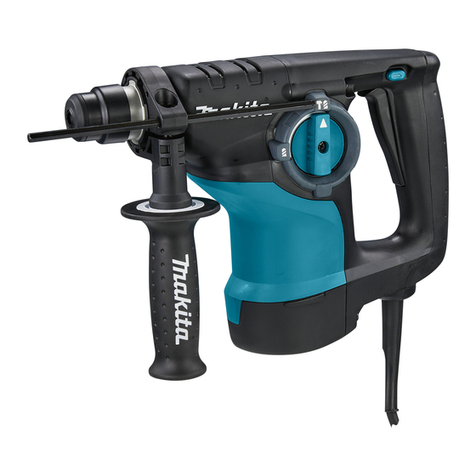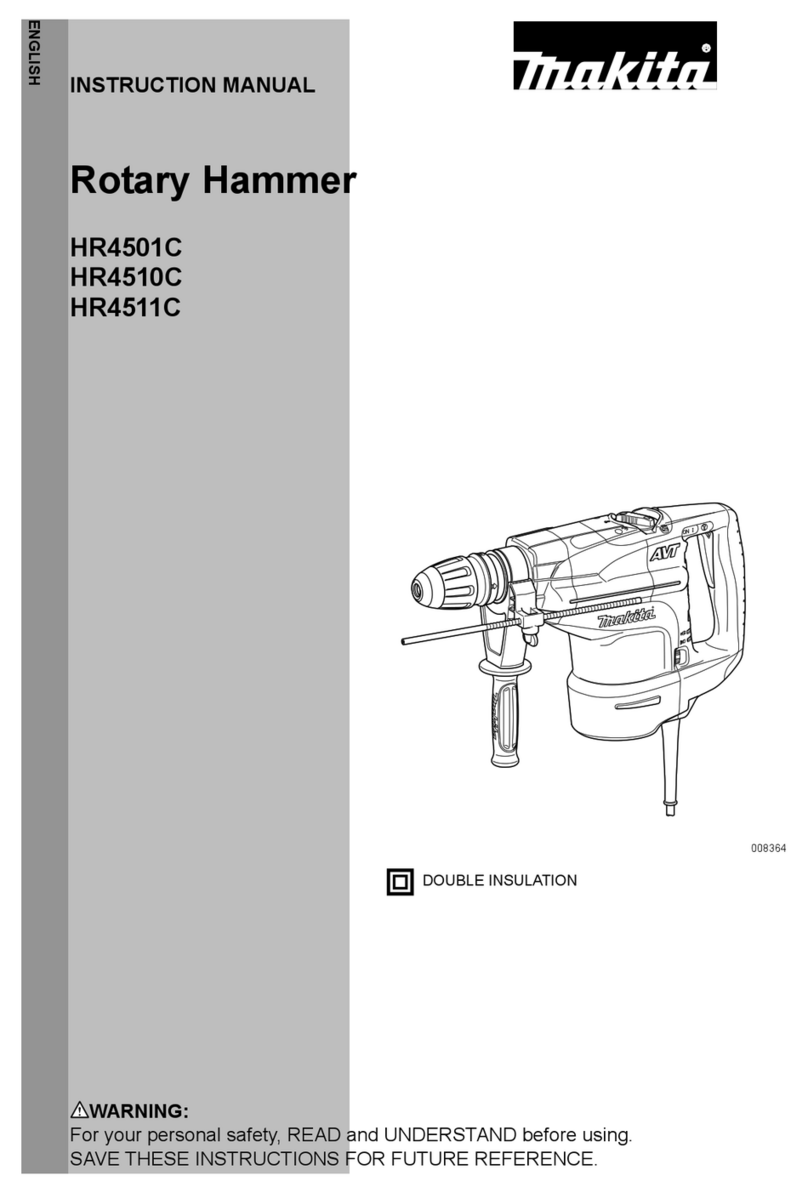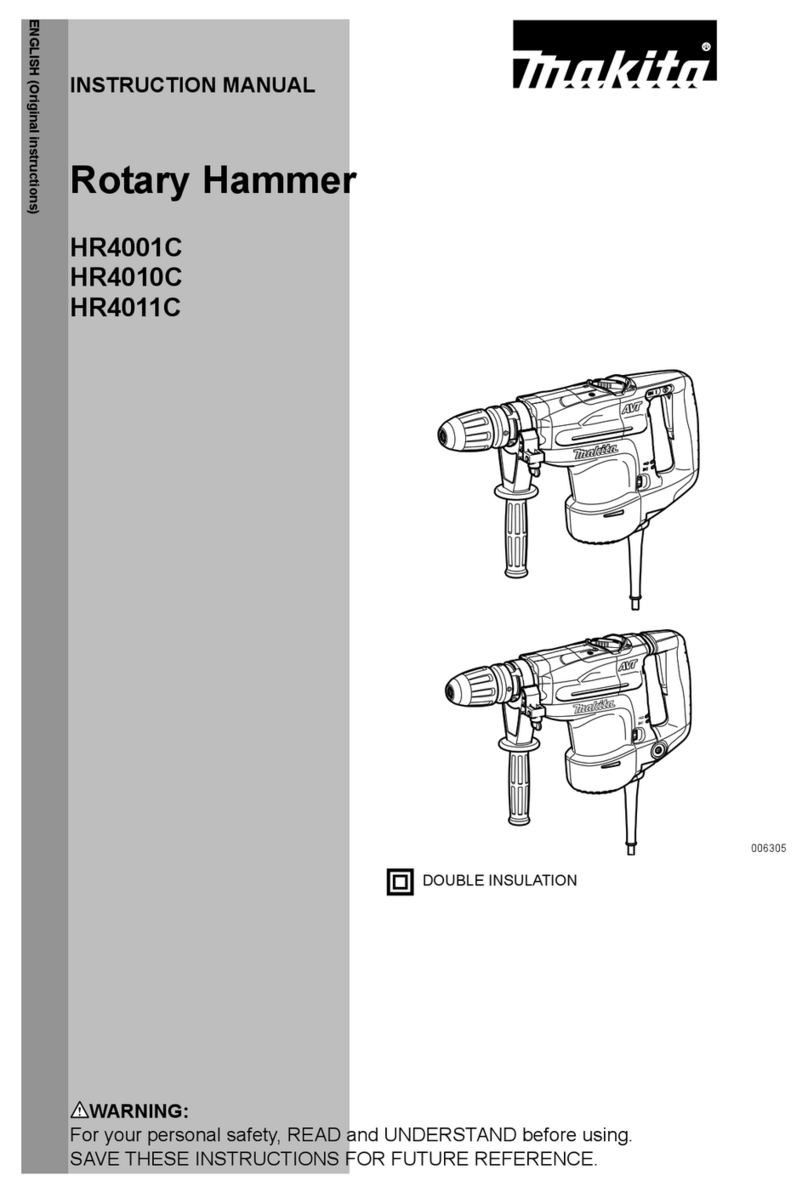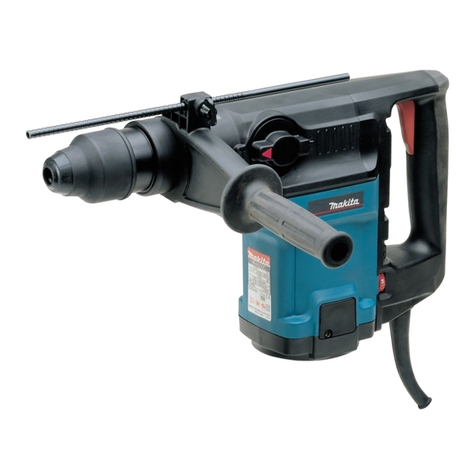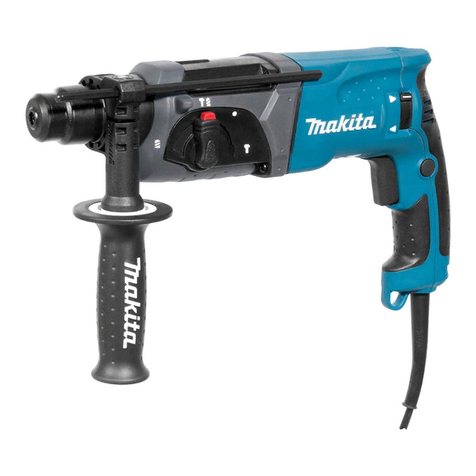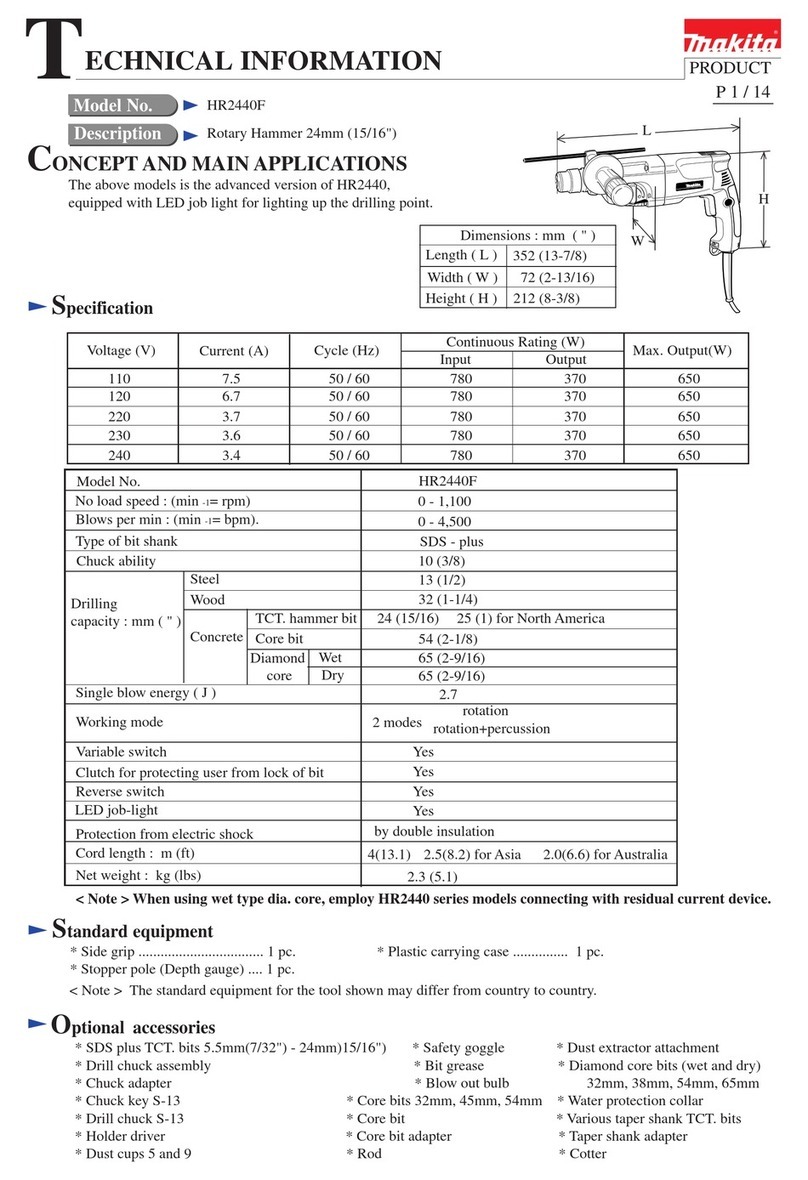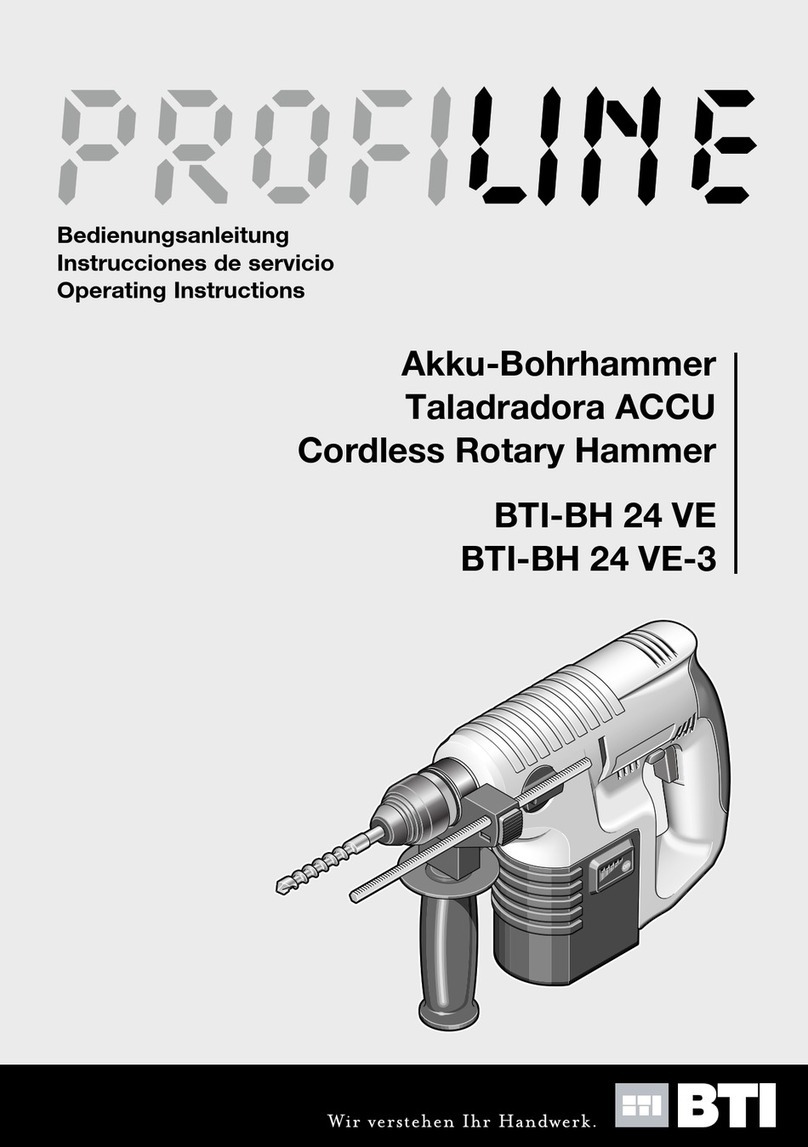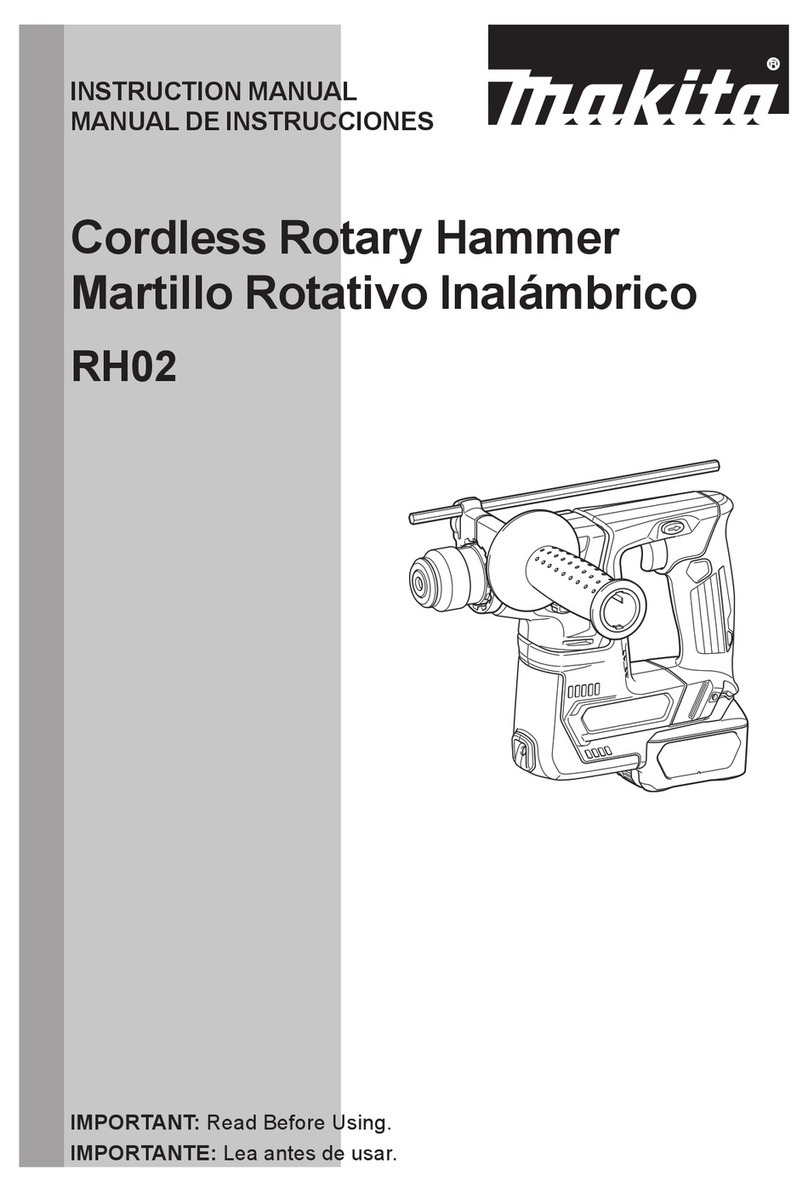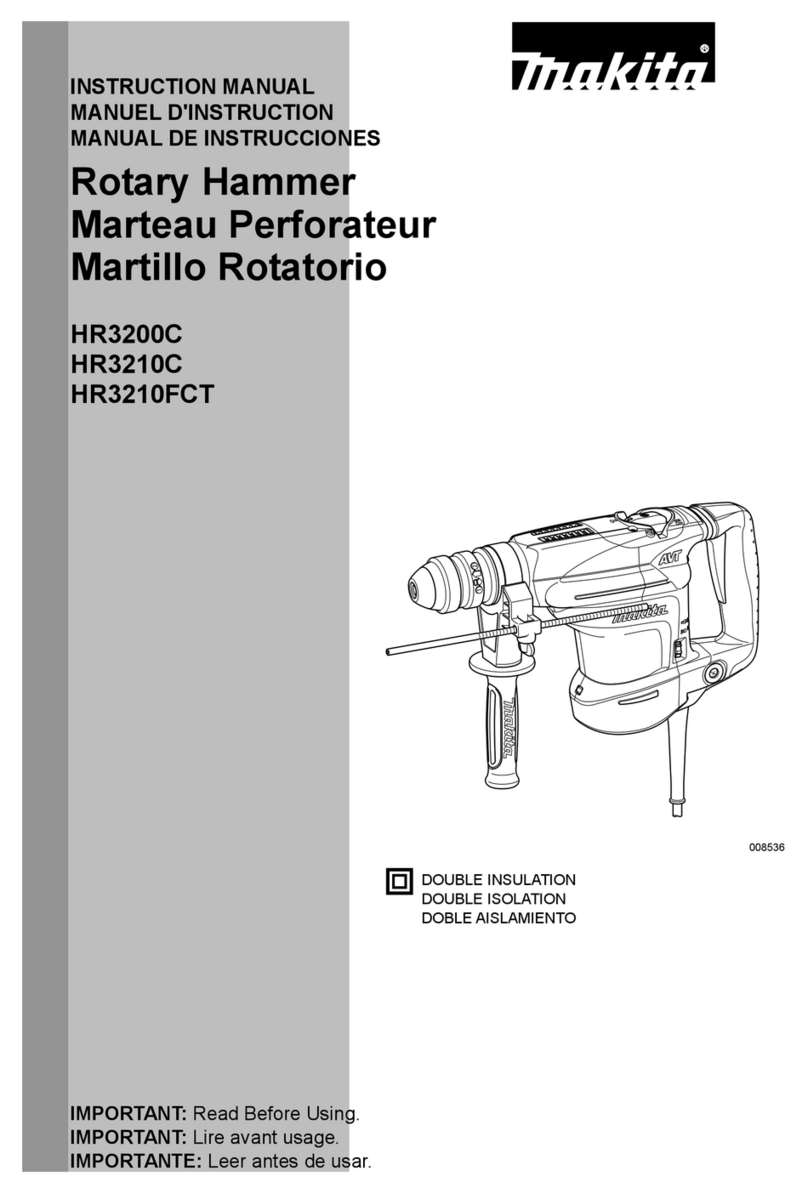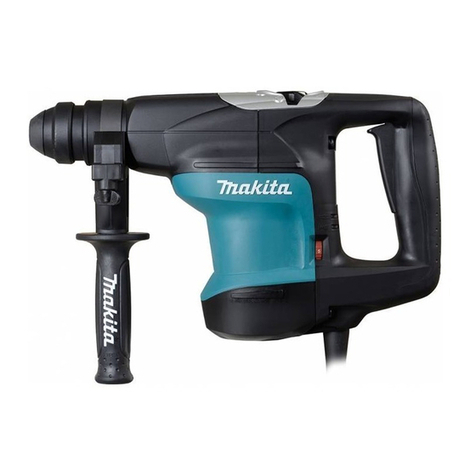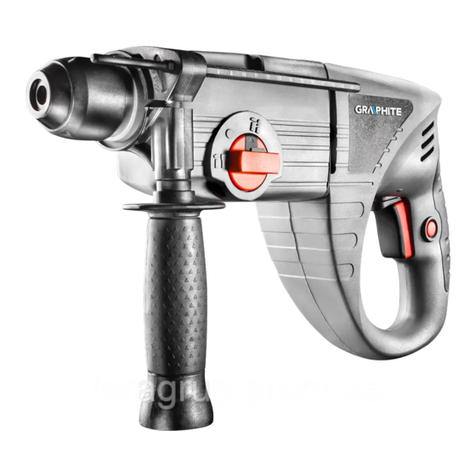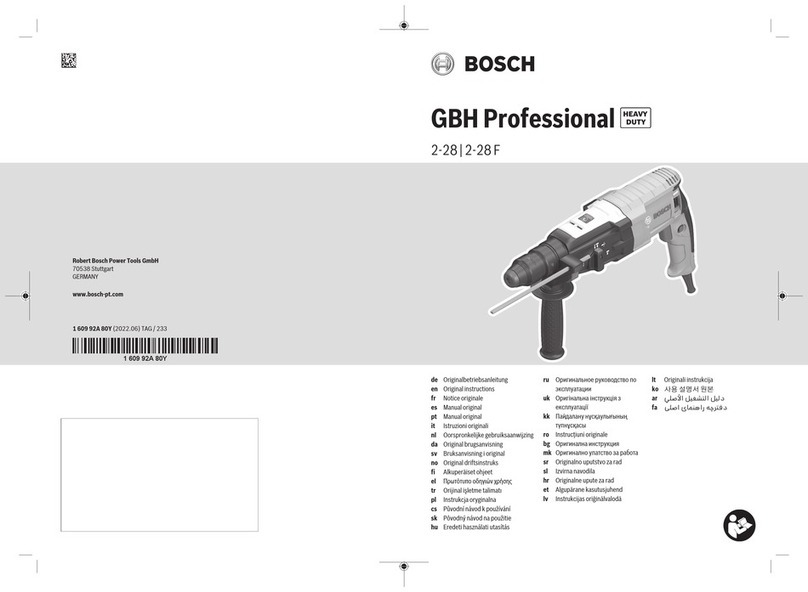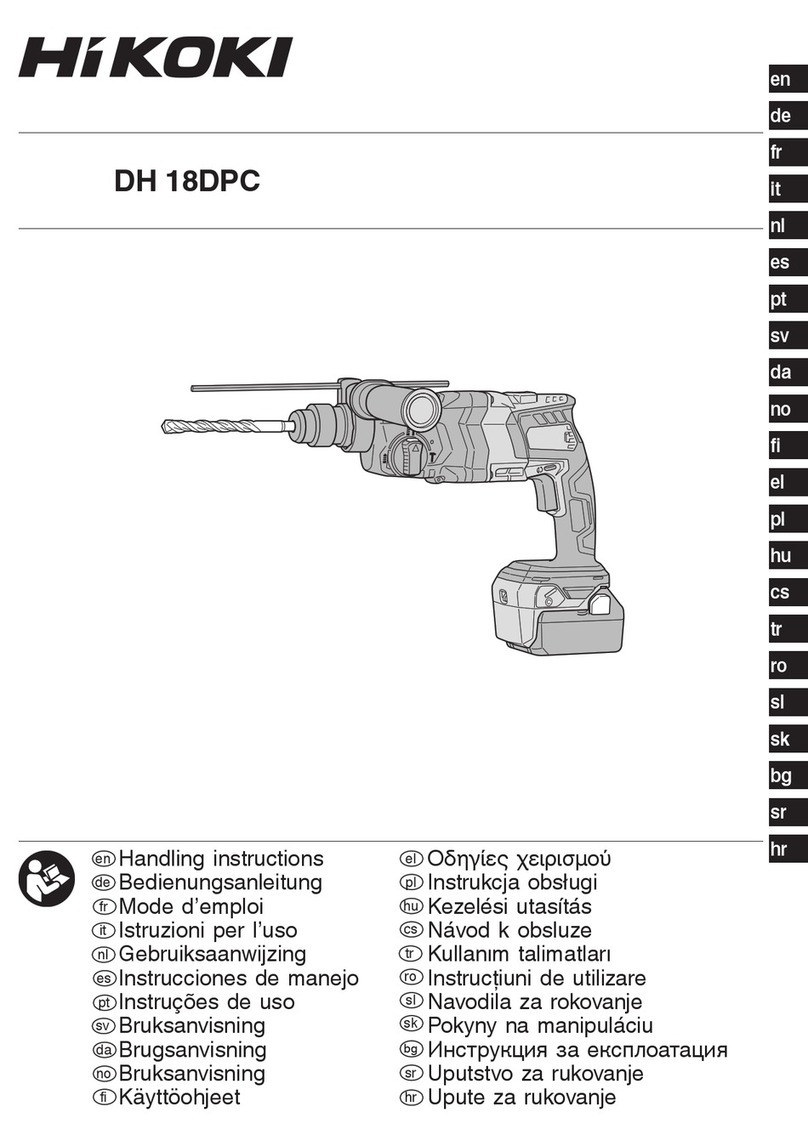
3
10. Do not overreach. Keep proper footing and bal-
ance at all times. Proper footing and balance
enable better control of the tool in unexpected situa-
tions.
11. Use safety equipment. Always wear eye protec-
tion. Dust mask, non-skid safety shoes, hard hat, or
hearing protection must be used for appropriate con-
ditions.
Tool Use and Care
12. Use clamps or other practical way to secure and
support the workpiece to a stable platform. Hold-
ing the work by hand or against your body is unsta-
ble and may lead to loss of control.
13. Do not force tool. Use the correct tool for your
application. The correct tool will do the job better
and safer at the rate for which it is designed.
14. Do not use tool if switch does not turn it on or
off. A tool that cannot be controlled with the switch is
dangerous and must be repaired.
15. Disconnect battery pack from tool or place the
switch in the locked or off position before mak-
ing any adjustments, changing accessories, or
storing the tool. Such preventive safety measures
reduce the risk of starting the tool accidentally.
16. Store idle tools out of reach of children and
other untrained persons. Tools are dangerous in
the hands of untrained users.
17. When battery pack is not in use, keep it away
from other metal objects like: paper clips, coins,
keys, nails, screws, or other small metal objects
that can make a connection from one terminal to
another. Shorting the battery terminals together
may cause sparks, burns, or a fire.
18. Maintain tools with care. Keep cutting tools
sharp and clean. Properly maintained tools with
sharp cutting edge are less likely to bind and are
easier to control.
19. Check for misalignment or binding of moving
parts, breakage of parts, and any other condition
that may affect the tool’s operation. If damaged,
have the tool serviced before using. Many acci-
dents are caused by poorly maintained tools.
20. Use only accessories that are recommended by
the manufacturer for your model. Accessories
that may be suitable for one tool may create a risk of
injury when used on another tool.
SERVICE
21. Tool service must be performed only by qualified
repair personnel. Service or maintenance per-
formed by unqualified personnel may result in a risk
of injury.
22. When servicing a tool, use only identical
replacement parts. Follow instructions in the
Maintenance section of this manual. Use of unau-
thorized parts or failure to follow Maintenance
instructions may create a risk of shock or injury.
SPECIFIC SAFETY RULES
USB028-2
DO NOT let comfort or familiarity with
product (gained from repeated use)
replace strict adherence to cordless
rotary hammer safety rules. If you use
this tool unsafely or incorrectly, you can
suffer serious personal injury.
1. Hold tool by insulated gripping surfaces when
performing an operation where the cutting tool
may contact hidden wiring. Contact with a “live”
wire will make exposed metal parts of the tool “live”
and shock the operator.
2. Wear ear protectors when using the tool for
extended periods. Prolonged exposure to high
intensity noise can cause hearing loss.
3. Be aware that this tool is always in an operating
condition, because it does not have to be
plugged into an electrical outlet.
4. Wear a hard hat (safety helmet), safety glasses
and/or face shield. Ordinary eye or sun glasses
are NOT safety glasses. It is also highly recom-
mended that you wear a dust mask and thickly
padded gloves.
5. Be sure the bit is secured in place before opera-
tion.
6. Under normal operation, the tool is designed to
produce vibration. The screws can come loose
easily, causing a breakdown or accident. Check
tightness of screws carefully before operation.
7. In cold weather or when the tool has not been
used for a long time, let the tool warm up for sev-
eral minutes by operating it under no load. This
will loosen up the lubrication. Without proper
warm-up, hammering operation is difficult.
8. Always be sure you have a firm footing.
9. Be sure no one is below when using the tool in
high locations.
10. Hold the tool firmly with both hands.
11. Keep hands away from moving parts.
12. Do not leave the tool running. Operate the tool
only when hand-held.
13. Do not point the tool at any one in the area when
operating. The bit could fly out and injure some-
one seriously.
14. Do not touch the bit or parts close to the bit
immediately after operation; they may be
extremely hot and could burn your skin.
15. Some material contains chemicals which may be
toxic. Take caution to prevent dust inhalation
and skin contact. Follow material supplier safety
data.

